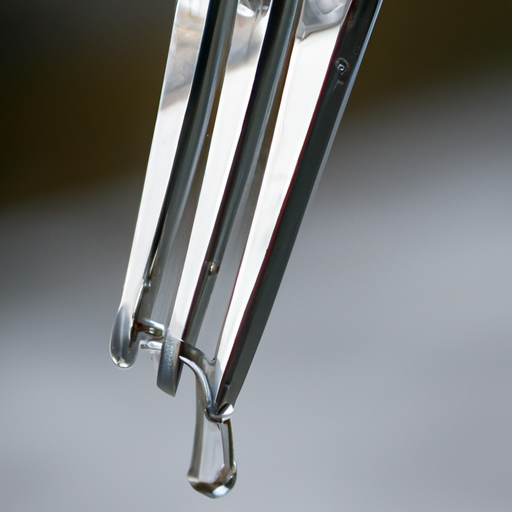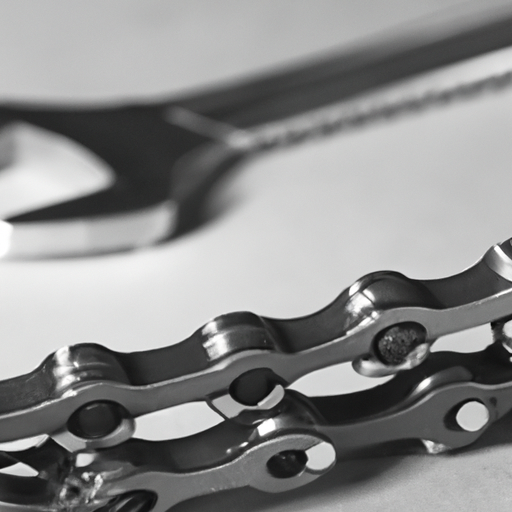What’s The Best Way To Clean And Maintain My Suspension Fork?
You want to make sure your suspension fork is in top-notch condition for your next adventure, but you’re not quite sure of the best way to clean and maintain it. Well, fear not! In this article, we will reveal the most effective and practical tips to keep your suspension fork in pristine condition. From proper cleaning techniques to regular maintenance practices, you’ll discover all the secrets to prolonging the life and performance of your suspension fork. So, let’s get started and ensure your next ride is smooth as ever!
Cleaning the Suspension Fork
Gathering the necessary tools and materials
Before you begin cleaning your suspension fork, it’s important to gather the necessary tools and materials. You will need a bucket or basin filled with warm soapy water, a soft bristle brush, a clean cloth or sponge, a mild detergent or bike-specific cleaner, a toothbrush or small brush for hard-to-reach areas, and a hose or water source for rinsing.
Removing the suspension fork from the bike
To effectively clean your suspension fork, it is recommended to remove it from the bike. Start by loosening the bolts or QR skewer that attaches the fork to the bike frame. Carefully disconnect any cables and brake mounts, taking note of their original positions for reinstallation later. Once the suspension fork is detached, you can proceed with the cleaning process.
Pre-cleaning preparations
Before diving into the cleaning process, it’s important to prepare the suspension fork. Start by removing any excess dirt or debris using a soft brush or cloth. This will prevent any particles from scratching the delicate components during the cleaning process. Additionally, make sure to fully extend the fork to access all the nooks and crannies that require cleaning.
Cleaning the exterior of the suspension fork
With the suspension fork prepared, it’s time to clean the exterior. Dip the soft bristle brush or sponge into the warm soapy water and gently scrub the fork, paying attention to hard-to-reach areas and crevices. You can use a toothbrush or small brush for stubborn dirt or grime. Once you have thoroughly cleaned the exterior, rinse it off with clean water or use a hose to remove any soap residue.
Cleaning the stanchions and sliders
The stanchions and sliders are crucial components of the suspension fork, and cleaning them properly is essential for maintaining its performance and longevity. Using a clean cloth or sponge, apply a small amount of mild detergent or bike-specific cleaner to the stanchions and sliders. Gently wipe them down, removing any dirt or debris that may have accumulated. Be careful not to apply excessive force or use abrasive materials that could damage the surfaces.
Cleaning the seals
The seals play an important role in the functionality of the suspension fork, so it’s vital to keep them clean. Using a toothbrush or small brush, gently clean the seals, removing any dirt or grime that may have built up. Be cautious not to damage or dislodge the seals during the cleaning process. Once you have thoroughly cleaned the seals, wipe off any excess moisture with a clean cloth.
Cleaning the internals
Cleaning the internals of a suspension fork requires specialized knowledge and tools. It is generally recommended to leave this task to a professional or experienced bike mechanic. The internals of the suspension fork can be sensitive and intricate, and improper cleaning could lead to damage or malfunction. If you suspect any issues with the internals, it is best to consult a professional for inspection and servicing.
Inspecting the Suspension Fork
Examining the exterior for damage or wear
After cleaning the suspension fork, it’s important to inspect the exterior for any signs of damage or wear. Look for scratches, dents, or paint chips that could compromise the structural integrity. Pay attention to any loose or damaged components, such as bolts, cable guides, or brake mounts. Identifying and addressing these issues early on can prevent further damage and ensure the safety of your suspension fork.
Inspecting the stanchions and sliders
The stanchions and sliders are critical components of the suspension fork. Inspect them carefully for any signs of scratches, pitting, or wear. Run your finger along the surfaces to feel for any irregularities or roughness, which could indicate damage. Any significant damage or wear on the stanchions or sliders may require professional attention or even replacement to maintain the fork’s performance.
Checking the seals and wipers
The seals and wipers contribute to the smooth operation of the suspension fork. Inspect them for any signs of wear, tearing, or leakage. Look for oil residue around the seals, as this could indicate a problem with the fork’s internals. If you notice any issues with the seals or wipers, it is recommended to seek professional assistance for further inspection and potential replacement.
Inspecting the internals for any signs of issues
While cleaning the internals of the suspension fork is best left to professionals, it is still important to keep an eye out for any signs of issues. If you experience any abnormal noises, loss of performance, or a decline in suspension function, it is crucial to seek professional help to inspect and address these problems. Regular inspections by a qualified technician can detect and resolve any internal issues with your suspension fork.
Lubricating the Suspension Fork
Choosing the appropriate lubricant
Lubrication is essential for the proper functioning and longevity of your suspension fork. When selecting lubricant, it is crucial to use a product specifically designed for suspension forks. Avoid using general-purpose lubricants or oils, as they may not provide the necessary properties to protect and maintain the fork’s internal components. Consult your suspension fork’s manufacturer guidelines or speak to a qualified bike mechanic to find the appropriate lubricant for your specific fork model.
Applying lubricant to the stanchions and sliders
To lubricate the stanchions and sliders, apply a small amount of the recommended lubricant onto a clean cloth or directly onto the stanchions. Gently rub the lubricant along the stanchions, ensuring it spreads evenly. This will help reduce friction and provide smoother movement. Be cautious not to apply excessive lubricant, as it can attract dirt and lead to contamination.
Lubricating the seals and wipers
Proper lubrication of the seals and wipers is crucial for maintaining their effectiveness and preventing damage. Using a recommended suspension fork lubricant, carefully apply a thin layer around the seals and wipers. This will help maintain their flexibility and prevent dryness or cracking. It is important to use the appropriate amount of lubrication, as excessive lubricant can lead to seal leakage or contamination.
Maintaining the Suspension Fork
Regularly cleaning the suspension fork
Regular cleaning is key to maintaining the performance and lifespan of your suspension fork. Make a habit of cleaning your fork after every ride, especially if you encountered muddy or dusty trails. Remove any visible dirt or debris using a soft brush or cloth. Follow the cleaning process mentioned earlier in this article to ensure thorough maintenance. By keeping your suspension fork clean, you can prevent the build-up of contaminants and prolong its lifespan.
Inspecting and replacing worn-out or damaged parts
Regular inspections are essential to identify worn-out or damaged parts that may affect the performance of your suspension fork. Examine all the components, including bolts, cable guides, and brake mounts, for any signs of wear, corrosion, or looseness. If you notice any abnormalities, consult a qualified bike mechanic for further inspection and potential replacement of the affected parts. Addressing these issues promptly will ensure the safety and optimal performance of your suspension fork.
Performing routine maintenance and servicing
Aside from regular cleaning and inspections, it is important to follow the recommended maintenance schedule for your suspension fork. This typically involves periodic servicing and maintenance tasks indicated by the manufacturer or a qualified bike mechanic. Routine maintenance tasks may include changing the lubricant, replacing seals or wipers, adjusting the suspension settings, or performing a complete overhaul. Following the maintenance guidelines will help maintain the performance and durability of your suspension fork.
Reassembling and Reinstalling the Suspension Fork
Reattaching the suspension fork to the bike
After cleaning, inspecting, and maintaining the suspension fork, it’s time to reattach it to the bike. Carefully align the fork with the bike frame and reinsert the bolts or QR skewer. Make sure to tighten the bolts evenly, following the torque specifications provided by the manufacturer. Reattach any cables and brake mounts, ensuring they are secured properly. Double-check that all components are in their original positions before moving on to the next step.
Properly tightening the bolts and fasteners
When attaching the suspension fork back to the bike frame, it is crucial to tighten the bolts and fasteners correctly. Using a torque wrench, tighten the bolts evenly, following the specific torque values recommended by the manufacturer. This will ensure that the suspension fork is securely fastened to the frame, preventing any potential accidents or damage during rides. If you are unsure about the correct torque values, consult the manufacturer’s guidelines or seek professional assistance.
Testing the suspension fork’s functionality
Once the suspension fork is reassembled and properly attached to the bike, it’s important to test its functionality before hitting the trails. Bounce the fork up and down, checking for any unusual noises, resistance, or issues with its movement. Pay attention to the suspension’s responsiveness and overall feel. If you detect any abnormalities, it is recommended to have the suspension fork inspected by a qualified bike mechanic before using it for your next ride.
Common Suspension Fork Maintenance Mistakes to Avoid
Overlooking regular cleaning
One common mistake is neglecting regular cleaning of the suspension fork. Failing to remove dirt, mud, or debris on a regular basis can lead to build-up and potential damage to the delicate components. Make sure to incorporate cleaning into your routine maintenance to keep your suspension fork in optimal condition.
Ignoring signs of damage or wear
Ignoring signs of damage or wear on your suspension fork can have serious consequences. Small issues, if left unaddressed, can escalate into major problems that compromise the safety and performance of your fork. Stay vigilant during inspections and take action promptly to resolve any issues.
Using incorrect cleaning agents
Using incorrect cleaning agents can cause damage to the suspension fork. Avoid using harsh chemicals, solvents, or abrasive materials that can strip away protective coatings or corrode the components. Stick to mild detergents or bike-specific cleaners recommended by the manufacturer to ensure the longevity and integrity of your suspension fork.
Using excessive force during cleaning or maintenance
Using excessive force during cleaning or maintenance can lead to damage to the suspension fork. Components such as seals, wipers, and stanchions are delicate and require gentle handling. Avoid using excessive pressure or force when cleaning or carrying out maintenance tasks to prevent any unnecessary damage.
Not following the manufacturer’s recommendations
Not following the manufacturer’s recommendations can result in ineffective maintenance or even void your warranty. Always consult the manufacturer’s guidelines and follow their instructions for cleaning, maintenance, and other important procedures. This ensures that you are taking the appropriate measures to maintain your suspension fork properly.
When to Seek Professional Help
When there are complex issues or internal damage
If you encounter complex issues or suspect internal damage, it’s best to seek professional help. Suspension forks have intricate internal components that require specialized knowledge and tools to diagnose and repair. Attempting to fix complex problems without adequate expertise may worsen the situation or compromise the safety of your fork.
If you are unsure about performing maintenance tasks
If you are unsure about performing maintenance tasks, it’s always safer to consult a professional. Suspension forks are crucial for the overall performance and safety of your bike, and any mistakes during maintenance can have serious consequences. By seeking expert advice, you can ensure that the maintenance tasks are carried out correctly and that your suspension fork is in optimal condition.
If the suspension fork requires specialized servicing
Certain servicing tasks may require specialized knowledge and equipment that is beyond the capabilities of most riders. If your suspension fork requires specific servicing, such as a complete overhaul or internal rebuild, it is recommended to entrust the task to a qualified bike mechanic or a service center authorized by the manufacturer. This ensures that the fork receives the necessary expertise and attention it needs.
By following these comprehensive steps and guidelines, you can clean, inspect, lubricate, and maintain your suspension fork effectively. Regular care and maintenance will not only prolong the lifespan of your suspension fork but also ensure optimal performance and a safe riding experience. Remember to prioritize safety, consult professional advice when needed, and enjoy the benefits of a well-maintained suspension fork on your cycling adventures.


